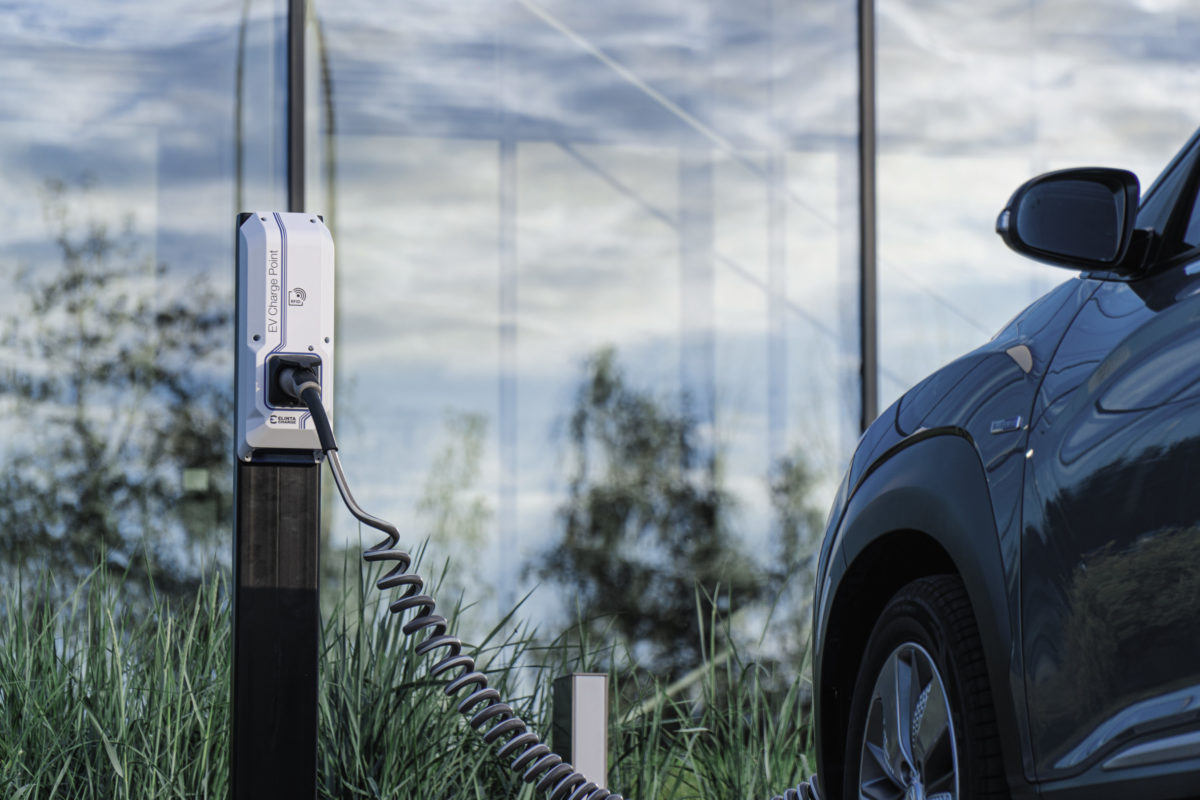The upswing in electromobility is bringing new opportunities for Germany’s solar installers. Many have to familiarize themselves with a range of new products. The pv magazine Deutschland team conducted an extensive supplier survey to find out what sets the various home charging stations apart and what it means for installers and homeowners.
At first glance, an EV charger seems little more than an enhanced electric socket, and the entry threshold for manufacturers to launch their own products is correspondingly low. Because Germany’s national promotional bank, the KfW, has supported the installation of wallboxes, it has developed into an attractive market. The bank already has more than 250 providers listed, which fulfill the basic requirement that the device provides the technical possibility to control charging power from outside – for example, from the grid operator.
E-mobility: On a greener road to transportation
 Urban transportation is key to modern civilization. But it has come at a cost, contributing to a dangerous carbon footprint, high levels of smog, a growing inequality gap, and the destruction of some of our most fragile environments. Thus, in the first quarter of this year, pv magazine’s UP Initiative will focus on the rise of e-mobility and how it can complement the renewable energy transition. Read our coverage here.
Urban transportation is key to modern civilization. But it has come at a cost, contributing to a dangerous carbon footprint, high levels of smog, a growing inequality gap, and the destruction of some of our most fragile environments. Thus, in the first quarter of this year, pv magazine’s UP Initiative will focus on the rise of e-mobility and how it can complement the renewable energy transition. Read our coverage here.
However, it’s not quite that simple, especially if you want to integrate EV charging with a rooftop PV system and into an energy management system.
As a first step in conducting the EV charger overview, manufacturers that have devices known to be well suited for combination with PV was the first port of call – and then the survey was expanded. The new database includes 120 EV chargers. They include the key capabilities of each product series from 36 suppliers, to which more features can sometimes be added. Seven respondents indicated that they are rebranding purchased solutions, but that they are not simple clones and in some circumstances functionalities have been adapted. The database will continue to expand.
Target groups
The range of capabilities that can be included in a residential EV charging station vary greatly, as do the prices. The cheapest model is available in Germany for €479, from VW subsidiary Elli, and the most expensive from eCharge Hardy Barth at €5,800 – clearly worlds apart. The former is suitable to charge a car in compliance with safety regulations, the latter allows two cars to be connected simultaneously, and includes a comprehensive energy management system and public billing, allowing users to pay with charging cards and/or credit card. In between these are all kinds of combinations which differ in terms of interface, their in-house apps, built-in protection components and other features. Different solutions are needed across four segments: single-family home, apartment building or multi-family home, employee parking lot; and public charging stations. Of the devices listed, 108 are suitable for residential parking, 86 for commercial, and 79 for both, according to the relevant manufacturer. Users must decide whether they are looking for systems that require energy and charging management, whether it should come from the manufacturer or be independent, and how it is operated. Energy management requirements can vary widely, especially when comparing a private garage to a large customer and employee parking lot.
Maximum load
In the residential and consumer segment, pv magazine Deutschland placed particular emphasis on transparency, in terms of solar-optimized charging, and how the maximum load the charger draws can be limited. This is important if you want to charge at 22 kW rather than 11 kW, which is one specification that will qualify an EV charger to subsidized finance from the KfW, or if you may want to add a charging point for a second car later on. Seventy of the 108 end-user products surveyed include the capacity to limit maximum load without additional devices, even with several EV chargers installed next to each other.
The requirements of very large parking lots at commercial premises are significantly higher than in residential homes. In these cases, charging points often have to be included in the building’s operational energy management system, for which compatible interfaces are required. Only eight of the devices listed for the commercial segment do not allow any integration into an external energy and load management systems, and can thus really only be used for simple home charging.
The survey asked for publicly documented interfaces regarding Modbus, for EEBus interfaces and implementation of the Open Charge Point Protocol (OCPP). In principle, all of these allow third parties to develop control systems. Eighty-six systems have at least one of these interfaces. Whether the documentation is sufficient, however, only becomes apparent in individual cases. “We do appropriate implementation and testing with every charging station manufacturer before we approve it for our energy management,” said Matthias Suttner, head of partner management at The Mobility House.
Of particular interest to developers of commercial solutions is that, in principle, power control of the charging power should be possible from the implementation of OCPP in version 1.6. However, it is known that not all providers implement this. We therefore asked specifically about the “OCPP 1.6 smart charging” option or OCPP 2.0. These were indicated as implemented in only 33 of the 63 devices that are in principle OCPP compatible.
Billing options
There are various options for billing. In the simplest case, anyone who charges a company car in a private parking lot and wants to bill the employer for the energy must be able to print out an invoice. We asked whether there is any kind of option for such billing. This is the case for 69 of the 108 end-user devices.
In the commercial sector, it can be interesting to see whether billing with employees via a manufacturer’s own platform works. This is the case for 48 products. However, such billing is often implemented via third-party providers. This then requires corresponding OCPP interfaces. In order to bill, it is necessary for the devices to contain the more accurate MID meters or the even more expensive meters that conform to calibration law. These requirements vary from country to country . Currently in Germany, as long as you don’t offer public charging, you can bill with MID meters, explains Carina Beermann, product manager at Eaton. However, in Germany this exemption from the measurement and calibration law only applies until 2030, and it is not yet possible to know what will happen after that.
This content is protected by copyright and may not be reused. If you want to cooperate with us and would like to reuse some of our content, please contact: editors@pv-magazine.com.
